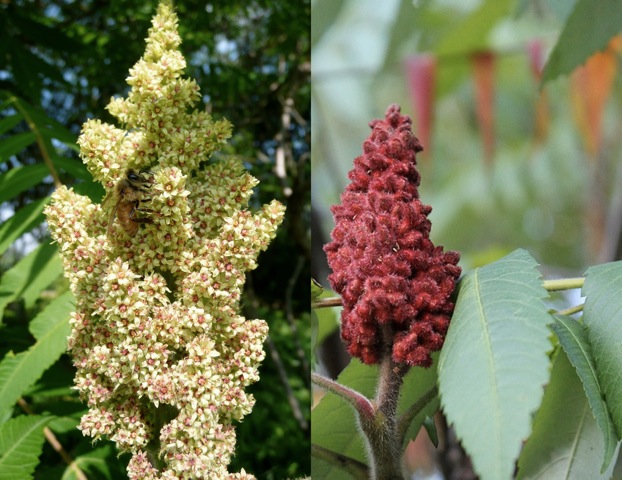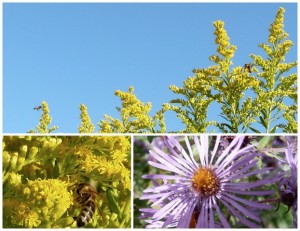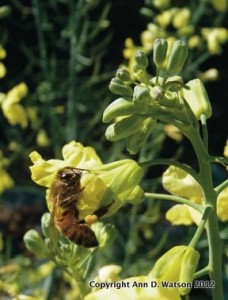Fruits of Their Labors

The staghorn sumac (Rhus typhinia or Rhus hirta) flowers that the honeybees pollinated in June have developed into dark, velvety fruit clusters, or drupes. You can gather the drupes to make into a Vitamin C- and flavor-rich drink, or to dry and use next summer for your smoker fuel if you keep bees. Make sure you’re not collecting poison sumac fruits. Identification info at this Ohio State University web site, and a recipe at Healing-from-home-remedies.
You can also leave the fruits for the deer and birds to enjoy all winter, and for visual beauty in the landscape, their burgundy red standing out against the white of winter snows.
At the hive, the bees are still flying, gathering the last bits of pollen and nectar from late-blooming garden flowers and the last few asters, dandelions, or goldenrod.
Annie Watson

